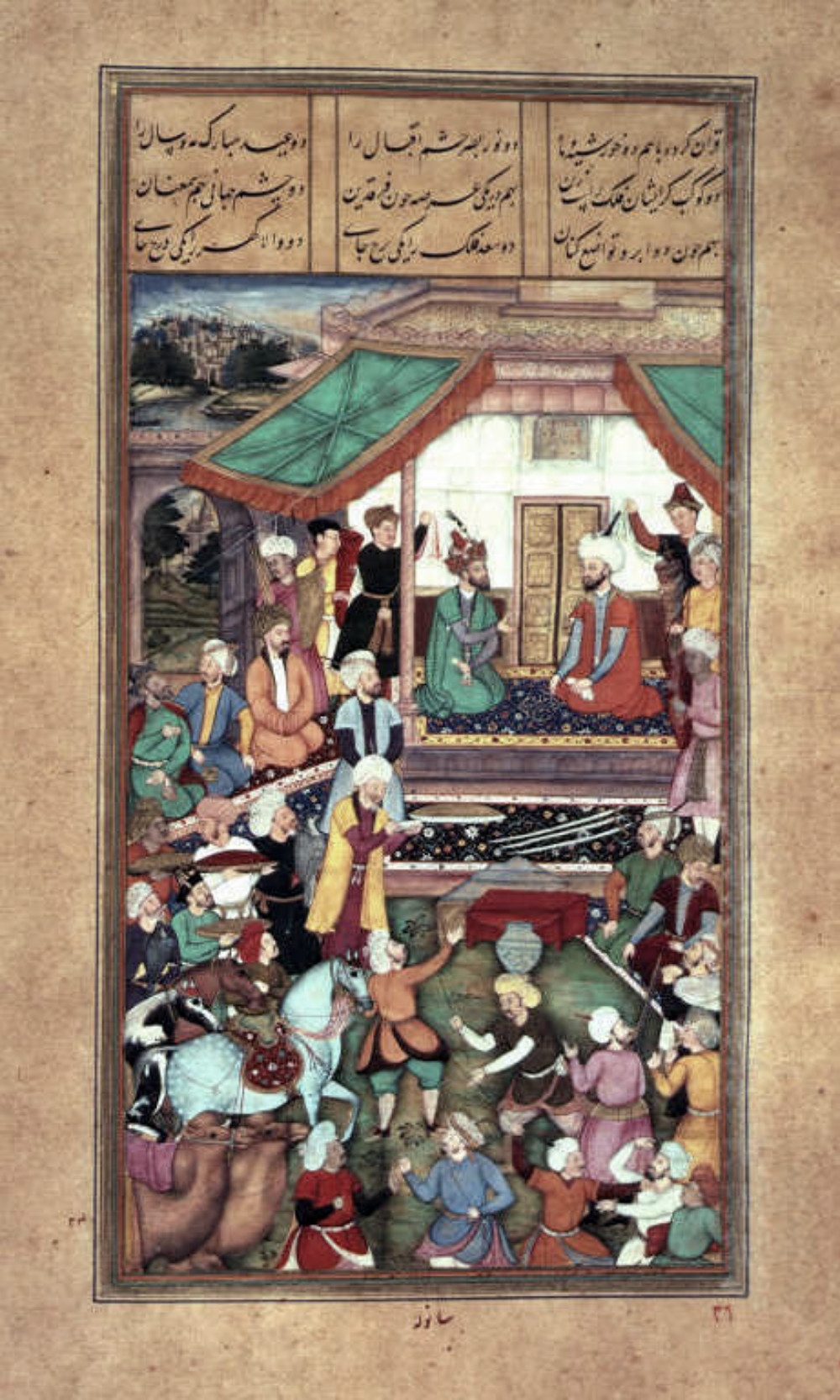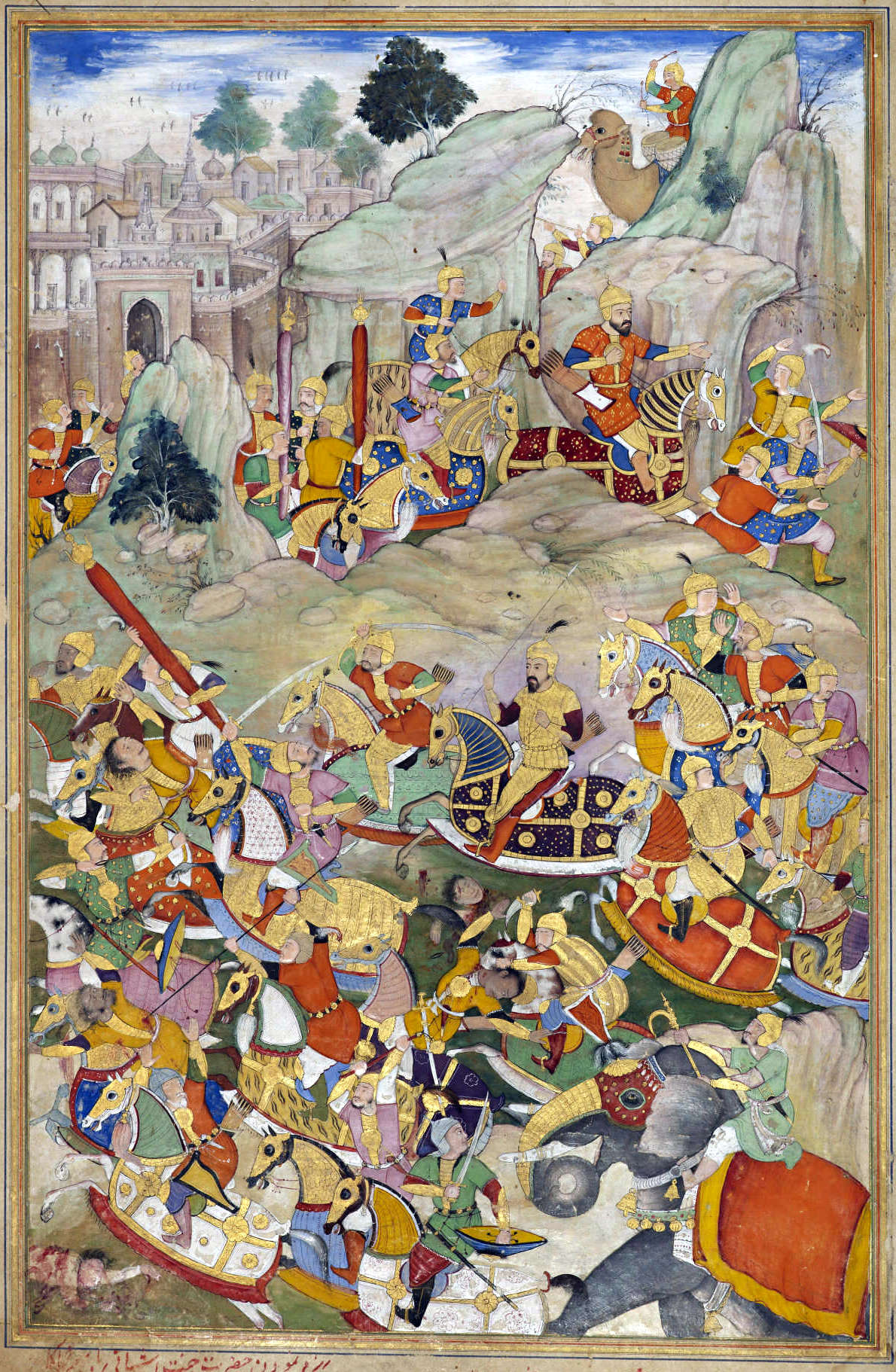Mughal Emperor Humayun remained in exile for nearly fifteen years after his defeat at the battle of Kannauj. His efforts to go to Kashmir or Badakhshan were foiled by his brother Kamran. He then proceeded to Sindh and tried to capture it but failed. In 1541 A.D. he married Hamida Banu, the daughter of the spiritual preceptor of Hindal, Mir Ali Akbar Jani.
Humayun proceeded towards Marwar. Its ruler Maldeva had assured of his help to Humayun about a year back. But, Humayun realized that he was not in a mood to help him at that time and, probably, was won over by Sher Shah to his side.
He immediately withdrew himself because he feared that Maldeva would imprison him and hand him over to Sher Shah. While returning from there he was given shelter by Virasala, the Rajput ruler of Amarkot where Akbar was born in 1542 A.D. Shah Husain, the ruler of south Sindh agreed to give passage and needful help to Humayun to proceed to Kandhar at that time and Humayun left India.

Kamran tried to capture him on the way but Humayun could reach Persia safely after leaving his infant son Akbar. Akbar was taken under the care of Askari who was the governor of Kandhar at that time. Shah Tahmasp, the ruler of Persia, welcomed Humayun and agreed to help him with money and soldiers in 1544 A.D. on condition that he would accept the Shia faith, propagate it among his subjects and restore Kandhar to Persia after its conquest.
Humayun had to accept that humiliating treaty and then he proceeded to attack Kandhar with the help of the Persian forces. Humayun captured Kandhar and Kabul from Kamran in 1545 A.D. and retained Kandhar to himself after the death of the son of Shah Tahmasp. Here he was joined back by Hindal and Yadgar Mirza. But, Kamran and Askari troubled him.

They were, however, defeated several times, pardoned by Humayun every time but, ultimately, were captured and punished. Kamran was blinded and allowed to proceed to Mecca where he died in 1557 A.D. Askari was also allowed to go to Mecca from where he never returned and died in 1558 A.D.
Hindal also fell fighting against the Afghans during this period. Thus, ultimately, Humayun became free from the rivalry of his brothers and settled himself in Afghanistan from where he got an opportunity to come back to India and recover his lost empire. In 1555 CE, Humayun was able to recover his Empire after the victory in the Battle of Machhiwara that marked the end of the Suri Dynasty.
Recovery of Mughal Empire & Death of Humayun (c.1555-1556 C.E.)
Sher Shah who had turned out Humayun from India died in 1545 A.D. He was succeeded by Islam Shah. Humayun once attempted to attack India during his life-time but could not carry out his plan due to the vigorous activity of Islam Shah. Islam Shah died in October 1553 A.D. That resulted in the division of the Afghan Empire in India.
The Battle of Machhiwara took place on 15 May 1555 A.D. between the Afghans and the Mughals. It was a complete victory for the Mughals and the entire Panjab was occupied by them. Sikandar Shah himself then marched forward to fight against the Mughals and the battle of Sirhind was fought between the two on 22 June 1555 A.D.

Sikandar Shah was defeated and fled to the hills of north-west Punjab. Humayun then occupied Delhi in July 1555 A.D. Afterwards, Agra, Sambhal, and the nearby territory were also occupied by the Mughals.
Humayun, however, could not live long after the capture of Delhi. One day when he was descending from the stairs of the library at Din Panah, he slipped and fractured his skull. Only two days after the accident, he died on 26 January 1556 A.D. He nominated his son Akbar as his successor to the throne before his death.

